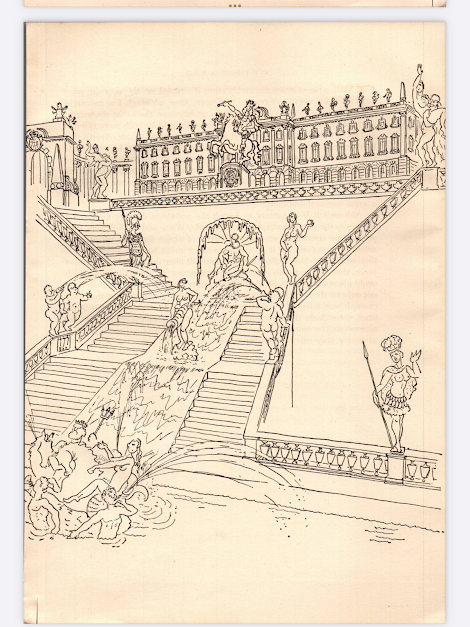What is strange about historical research is you get lead
down paths that don’t always coincide with your original interests. In researching
and writing my Domesday Book what appealed to me was it documented essentially
a way of life in 1086 and in my case the real interest was the available
technologies supporting that way of life. Understanding the technologies that existed
to both create the Domesday Book itself and the living of a life in those times
is what really motivated me to write it. Also I was particularly interested in
the reproduction of it over the next 1000 years and the historians that had over
the years spent their lives analysing it. Inevitably religious content was a
significant factor that stimulated the development of book technology but the religious content itself didn’t excite me. But religion's role in the development of communities around the Parish Church was another interest
but in a social economic way not in terms of religious documents or practice.
So inevitably I have ended up doing some research of medieval religious
documents in the form of scrolls, codex and books but sort of ignoring the actual religious content. With no printing capabilities in the 11th Century
reproduction depended upon the copying of the original and in medieval Europe
copying was a much respected skill whereas these days we all would have a fear
of being accused of plagiarism. The Monasteries and their Monks formed the bed
rock of these book technologies.
This whole study of medieval writings is called palaeography.
Because I don’t want to get distracted into this area of research this blog
post is really me just “digitising the links” with a minimum of textual content
so I can easily go back to it in the future. But its not an area that I want to
devote too much of my time researching at present. But in the future with my
focus on “technology” I would be interested in locating those out of the
suggest 1 million medieval documents internationally stored in Libraries,
Universities or Private collections that have a “technology content”. It is important to appreciate that the
United Kingdom is only a small source of these medieval documents which are truly international.
What lead me to “The Gospels of Saint Augustine” produced
in the 6th Century is it predated the Domesday Book by 500 years but
it had the original “book technology” upon which the Domesday Book was based. It
is considered the oldest existing example of this book technology in the United
Kingdom and is still in existence as “MS286” in the Mathew Parker’s Library at
the Corpus Christi College Library. Cambridge, United Kingdom. Working with Stanford University, America a Digital Copy has been made available to view over the internet.
One strange fact was the Saint Augustine Gospels were carried in the procession at the Coronation of King Charles III and Queen Camilla with the book open at the page of the portrait of Saint Luke. To me it would have been more historically relevant to carry a copy of the Domesday Book instead since the continued existence of Royalty in the United Kingdom has been more dependant on the land ownership of their supporting Lords, with their ownership entitlement based upon their entries in the Domesday Book, rather than that of their poorer supporting Bishops who did not do so well in the Domesday Book. But no tears please for religious land ownership in the United Kingdom since it is still enormous.
So lets use these links to elaborate on this subject.
Lets look at the Mathew Parker’s Library and its development as a digital resource on the web.
https://parker.stanford.edu/parker/about/about-earlier-phases-of-parker-on-the-web
Look at an actual Digital Copy of "The Gospels of Saint Augustine (MS 286)" on the Stanford University website. Tap away to 129v to see Saint Luke.
https://parker.stanford.edu/parker/catalog/mk707wk3350
The background to the Gospels of Saint Augustine Medieval Manuscript being one of the oldest European books in existence. That is why it is "technology" wise of such importance.
https://en.m.wikipedia.org/wiki/St_Augustine_Gospels
Some more general information on Medieval Manuscripts
What is Palaeography?
https://en.m.wikipedia.org/wiki/Palaeography
What is a Manuscript?
https://en.m.wikipedia.org/wiki/Manuscript
Christopher De Hamel is one of the currently acclaimed experts
on Medieval Manuscripts where in his book “Meeting with Remarkable Manuscripts”
(2016) he dedicates a whole Chapter One to The Gospels of Saint Augustine. I own a copy and it never ceases to impress me with its content. As I have explained earlier I am as interested in the characters that dedicate their lives to studying and researching history as I am interested in history itself.
https://en.m.wikipedia.org/wiki/Christopher_de_Hamel



